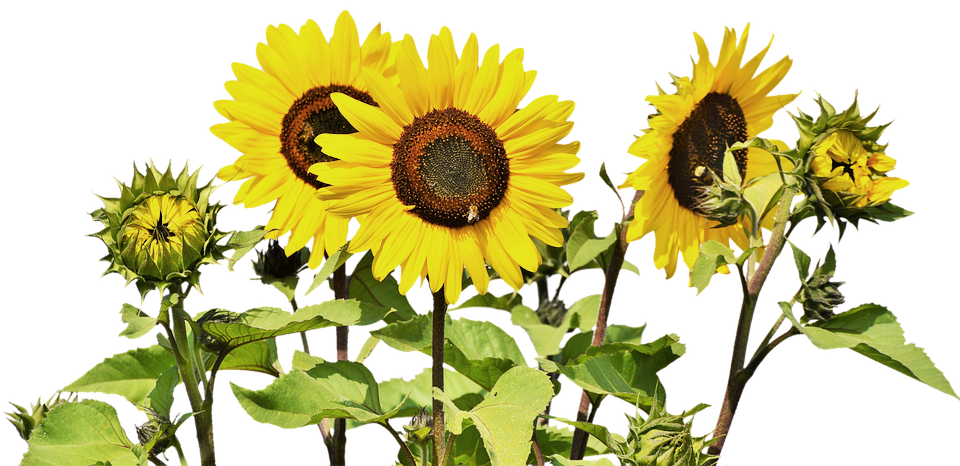
Container Gardening University: Exposure
By Chris Edmunds
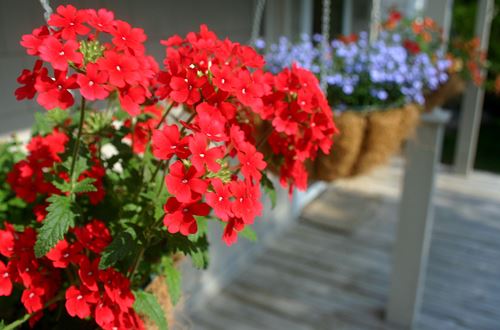
Location, location, location! One of the most important questions to ask when considering what plants to buy is where they’ll go in your yard and how much sun will they get there. While other factors, like watering and soil, are more flexible for tweaking, the amount of sun that reaches certain parts of your yard is something you’re usually stuck trying to work with. Finding the right plants for the right spot is essential for growing gorgeous containers.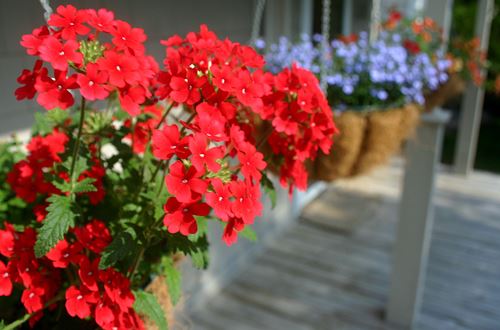
Basics of Sun Exposure
Every plant needs some type of sunlight, but some of them have evolved to tolerate scorching direct sunlight without burning, and others have learned to cope with minimal sunlight entirely.
Think of our garden centers as a “United Nations for Plants.” All the beautiful colors and textures you see originate from all across the world. Something from the deep jungle could be just a few feet away from a native desert plant.
You don’t have to be a gardening expert to match your plants with good locations in your yard. When you go to one of our stores, notice which plants we have located under the shade structure and which ones we display out in full sun. While this isn’t fool-proof, it’s going to help you see at-a-glance your options for sun and shade. The exceptions under the shade structure are Geraniums which are there to shield the blooms from heavy downpours. The other exceptions are shade plants that are displayed in sun because we don’t always have enough room under the shade structure. These will be ones least prone to sunburn until we have room later in the season. It is usually some sun tolerant begonias and perennials.
Our “Super Duper Plant Search” is really useful for matching plants to locations. In it you will see a “Sun/Shade” category. If you are looking for plants that work in, for example, “Full Shade” click on that option and you will see all of our plants that can handle full shade. It’s best to click on the individual pictures of the plants you are interested in to read more about that variety because we’ve included plants that can tolerate full shade, but really perform best in a sunnier location.
There are a few plants that go the full range from Full Sun to Full Shade. Most of these perform best on one end of the spectrum but can also perform respectably on the other end. These versatile plants are wonderful for people who have several containers they want to have the same plants but are located in different exposures. These plants can also help you with that difficult location that’s not really a shaded site, but it’s not really a sun site either.
Before you Shop:
It will really pay off if you first get a basic idea of your location options at home, and how much exposure they get. Imagine where you want to have your new plants in your yard and take a moment to consider key factors like how much sun that spot gets and what time of day that sunshine is.
Things that are important here are not just the number of hours of sunlight, but also the intensity of that sunlight (between noon and 6 p.m. has the strongest rays).
Types of Exposure:
To keep things simple, plants are usually only divided into a few types of exposure. Remember, these are general categories that reflect the amount and intensity of light that the plant prefers.
For the most successful garden, match up the exposure needed by your plants to the parts of your yard that accommodate those needs.
Full Shade:
“Full Shade” plants will want lots of shade. These plants are often native to tropical areas where they are protected from direct sun on the jungle floor.
Places that are considered “Full Shade” do not get much, if any, direct sunlight between the hours of 10 a.m. and 6 p.m. If your containers are up against the north side of your house or a wall, this is considered “Full Shade”. They might get a little early morning or evening sun, but that’s all they get. Away from the house, you would need to have big trees with a wide and thick canopy or some other shade-providing structure to provide enough shade for it to be considered “Full Shade”. Unless your spot is within a few feet of a north-facing wall, it’s best if you can watch your shade site (peek at it every hour or so) to make sure there is no direct sunlight between 9 a.m. and 6 p.m.
Screened in patios, though shaded, are tricky because plants need good air circulation and screens can trap air just enough that most shade plants will rot or get a fungal disease. Many houseplants and succulents can handle these conditions, but many other “shade” plants will struggle.
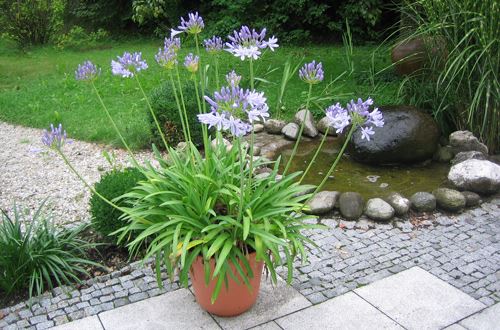 Part Shade:
Part Shade:
“Part Shade” is a category for plants that are usually shade plants but can tolerate a bit more sun. A spot is considered “Part Shade” if it is shielded from direct sunlight during the hottest part of the day, generally from noon to 6 p.m. The east side of your house, garage, or other structure is considered “Part Shade”. It will get a good dose of morning sun but is shielded the rest of the day.
Usually you don’t see an exposure for a plant shown only as “Part Shade”. It will normally be used to show a range like “Full to Part Shade”, meaning the plant will do well anywhere from full shade to part shade. In a few cases, it might also indicate when a full sun plant can also tolerate some shade (not full shade) in which case the plant would be classified as “Full Sun to Part Shade”. This category means the plant does best in sun, but if it has to handle some shade it will perform just fine.
Part Sun:
“Part Sun” is used to indicate a plant that likes lots of sun, but not quite “Full Sun.” “Part Sun” is usually not used by itself but to show a range such as “Full to Part Sun”.
A spot is considered “Part Sun” when it receives a good dose (about 3-4 hours) of intense sunlight between 11 a.m. and 6 p.m. but not all afternoon. The west side of your house is considered “Part Sun”. Under smaller trees which might give shade between 11 a.m. and 2 p.m. would also be considered “Part Sun”, or on a deck with intermittent afternoon sunlight peeking through laths or deck railings. Again, the best way to judge a spot is to actually keep an eye on it and see just how much sun and the time of day your spot is getting sun.
You will also see this exposure used to show a broader range, “Full Shade to Part Sun”. This means the plant does best in shade, but if it has to handle some sun it will still perform.
Your plants will let you know that they’re getting stressed from too much sun when their leaves start to yellow or look wilted even though the soil is moist. Though, beware, a plant that is wilted but has wet soil can also be a symptom of overwatering. You may be able to find out what is causing this by moving the pot into more shade. If the wilted-looking plant perks up after a few hours, or certainly by the next day, then it’s getting too much sun. If it doesn’t perk up, it’s probably been kept too wet for too long and needs to dry out to the point where the other plants in the pot start to show signs of wilt.
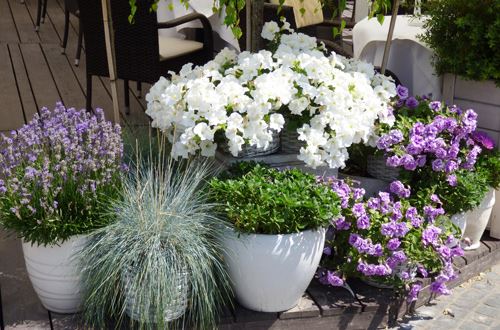 Full Sun:
Full Sun:
These plants are sunbathers that need 6+ hours of direct sunlight between 11 a.m. to 6 p.m. to look their best. While less sunlight won’t kill them, they may start to get lanky, pale and not bloom as well without all the hours of exposure that they need.
These plants are the perfect candidates for the most exposed parts of your yard, like a South-facing deck, or on the south side of your house, as long as there aren’t trees (or other objects) to cast much shade during the afternoon.
The choices for full sun are many, as you see our Missouri garden centers have tons of plants out in the full sun!
Having a successful garden is as easy as setting your plants up for success. By taking a few minutes to plan where and what to plant, you’ll have a gorgeous garden that works for you, not against you! If you’ve got a particularly exotic plant and are unsure about how much sun it needs, visit our garden center in Lee’s Summit and ask one of our experts.

